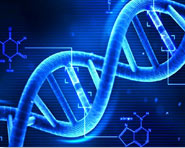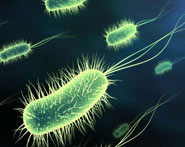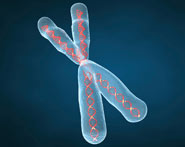


 النبات
النبات
 الحيوان
الحيوان
 الأحياء المجهرية
الأحياء المجهرية
 علم الأمراض
علم الأمراض
 التقانة الإحيائية
التقانة الإحيائية
 التقنية الحيوية المكروبية
التقنية الحيوية المكروبية
 التقنية الحياتية النانوية
التقنية الحياتية النانوية
 علم الأجنة
علم الأجنة
 الأحياء الجزيئي
الأحياء الجزيئي
 علم وظائف الأعضاء
علم وظائف الأعضاء
 الغدد
الغدد
 المضادات الحيوية
المضادات الحيوية|
Read More
Date: 15-3-2016
Date: 6-3-2016
Date: 21-3-2016
|
There are several species in the genus Listeria. Of these, L monocytogenes is important as a cause of a wide spectrum of disease in animals and humans. L monocytogenes is capable of growing and surviving over a wide range of environmental conditions. It can survive at refrigerator temperatures (4°C), under conditions of low pH and high salt conditions. There fore, it is able to overcome food preservation and safety barriers, making it an important foodborne pathogen. Recent data from the Centers for Disease Control and Prevention indicate that foodborne listeriosis is declining. However, one of the largest and most deadly outbreaks of listeriosis in the United States (147 cases across 28 states and 33 deaths) occurred in 2011 and was traced to contaminated cantaloupe from a packaging plant in Colorado. This outbreak emphasizes the ubiquitous nature of this organism and its ability to easily contaminate a variety of foods during any stage of the food handling process.
Morphology and Identification
L monocytogenes is a short, gram-positive, non–spore-forming rod (Figure 1). It is catalase positive and has a tumbling end-over-end motility at 22–28°C but not at 37°C; the motility test rapidly differentiates Listeria from diphtheroids that are members of the normal microbiota of the skin.

fig1. Gram stain of the gram-positive bacillus Listeria monocytogenes in a blood culture. Original magnification ×1000. Red blood cells are present in the background. Listeria organisms isolated from clinical specimens frequently show variation in length and often in shape as well. Typically, they are 0.4–0.5 μm in diameter and 0.5–2 μm long. (Courtesy of H. Tran.)
Culture and Growth Characteristics
Listeria grows well on media such as 5% sheep blood agar on which it exhibits the characteristic small zone of hemolysis around and under colonies. The organism is a facultative anaerobe and is catalase positive, esculin hydrolysis positive, and motile. Listeria produces acid but not gas from utilization of a variety of carbohydrates. T he motility at room temperature and hemolysin pro duction are primary findings that help differentiate Listeria from coryneform bacteria.
Antigenic Classification
Serologic classification is done only in reference laboratories and is primarily used for epidemiologic studies. There are 13 known serovars based on O (somatic) and H (flagellar) antigens. Serotypes 1/2a, 1/2b, and 4b make up more than 95% of the isolates from humans. Serotype 4b causes most of the foodborne outbreaks. Less labor intensive, genomic based methods have been developed but serotyping remains the gold standard.
Pathogenesis and Immunity
L. monocytogenes enters the body through the gastrointestinal tract after ingestion of contaminated foods such as cheese, fruit, or vegetables. The organism has several adhesin proteins (Ami, Fbp A, and flagellin proteins) that facilitate bacterial binding to the host cells and that contribute to virulence. It has cell wall surface proteins called internalins A and B that interact with E-cadherin, a receptor on epithelial cells, promoting phagocytosis into the epithelial cells. After phagocytosis, the bacterium is enclosed in a phagolysosome, where the low pH activates the bacterium to produce listeriolysin O. T his enzyme, along with two phospholipases, lyses the membrane of the phagolysosome and allows the listeriae to escape into the cytoplasm of the epithelial cell. The organisms proliferate, and ActA, another listerial surface protein, induces host cell actin polymerization, which propels them to the cell membrane. Pushing against the host cell membrane, they cause formation of elongated protrusions called filopods. These filopods are ingested by adjacent epithelial cells, macrophages, and hepatocytes, the listeriae are released, and the cycle begins again. L. monocytogenes can move from cell to cell without being exposed to antibodies, complement, or polymorphonuclear cells. Shigella flexneri and rickettsiae also usurp the host cells’ actin and contractile system to spread their infections.
Iron is an important virulence factor. Listeriae produce siderophores and are able to obtain iron from transferrin.
Immunity to L. monocytogenes is primarily cell mediated, as demonstrated by the intracellular location of infection and by the marked association of infection with conditions of impaired cell-mediated immunity such as pregnancy, advanced age, AIDS, lymphoma, and organ transplantation. Immunity can be transferred by sensitized lymphocytes but not by antibodies.
Clinical Findings
There are two forms of perinatal human listeriosis. Early onset syndrome (granulomatosis infantiseptica) is the result of infection in utero and is a disseminated form of the disease characterized by neonatal sepsis, pustular lesions, and granulomas containing L .monocytogenes in multiple organs. Death may occur before or after delivery. The late-onset syndrome causes the development of meningitis between birth and the third week of life; it is often caused by serotype 4b and has a significant mortality rate.
Healthy persons exposed to L monocytogenes in food may not become ill or may develop a mild, self-limiting febrile gastroenteritis lasting 1–3 days. This develops after an incubation period of 6–48 hours. Symptoms include fever, chills, headache, myalgias, abdominal pain, and diarrhea. Immunocompromised individuals can develop Listeria meningoencephalitis, bacteremia, and (rarely) focal infections. Listeria is one of the more common causes of meningitis in this group of patients. Clinical presentation of Listeria meningitis varies from insidious to fulminate and is nonspecific. Most clinical laboratories do not routinely culture for Listeria from routine stool samples. The diagnosis of systemic listeriosis rests on isolation of the organism in cultures of blood and spinal fluid.
Spontaneous infection occurs in many domestic and wild animals. In ruminants (eg, sheep), Listeria may cause meningoencephalitis with or without bacteremia. In smaller animals (eg, rabbits, chickens), there is septicemia with focal abscesses in the liver and heart muscle and marked monocytosis.
Many antimicrobial drugs inhibit Listeria species in vitro. Clinical cures have been obtained with ampicillin, erythromycin, or intravenous trimethoprim–sulfamethoxazole. Cephalosporins and fluoroquinolones are not active against L monocytogenes. Ampicillin plus gentamicin is often recommended for therapy, but gentamicin does not enter host cells and may not help treat the Listeria infection. Trimethoprim sulfamethoxazole is the drug of choice for central nervous system infections in patients who are allergic to penicillin.



|
|
|
|
منها نحت القوام.. ازدياد إقبال الرجال على عمليات التجميل
|
|
|
|
|
|
|
دراسة: الذكاء الاصطناعي يتفوق على البشر في مراقبة القلب
|
|
|
|
|
|
|
مركز الكفيل للإعلان والتسويق ينهي طباعة الأعمال الخاصة بحفل تخرج بنات الكفيل الثامن
|
|
|